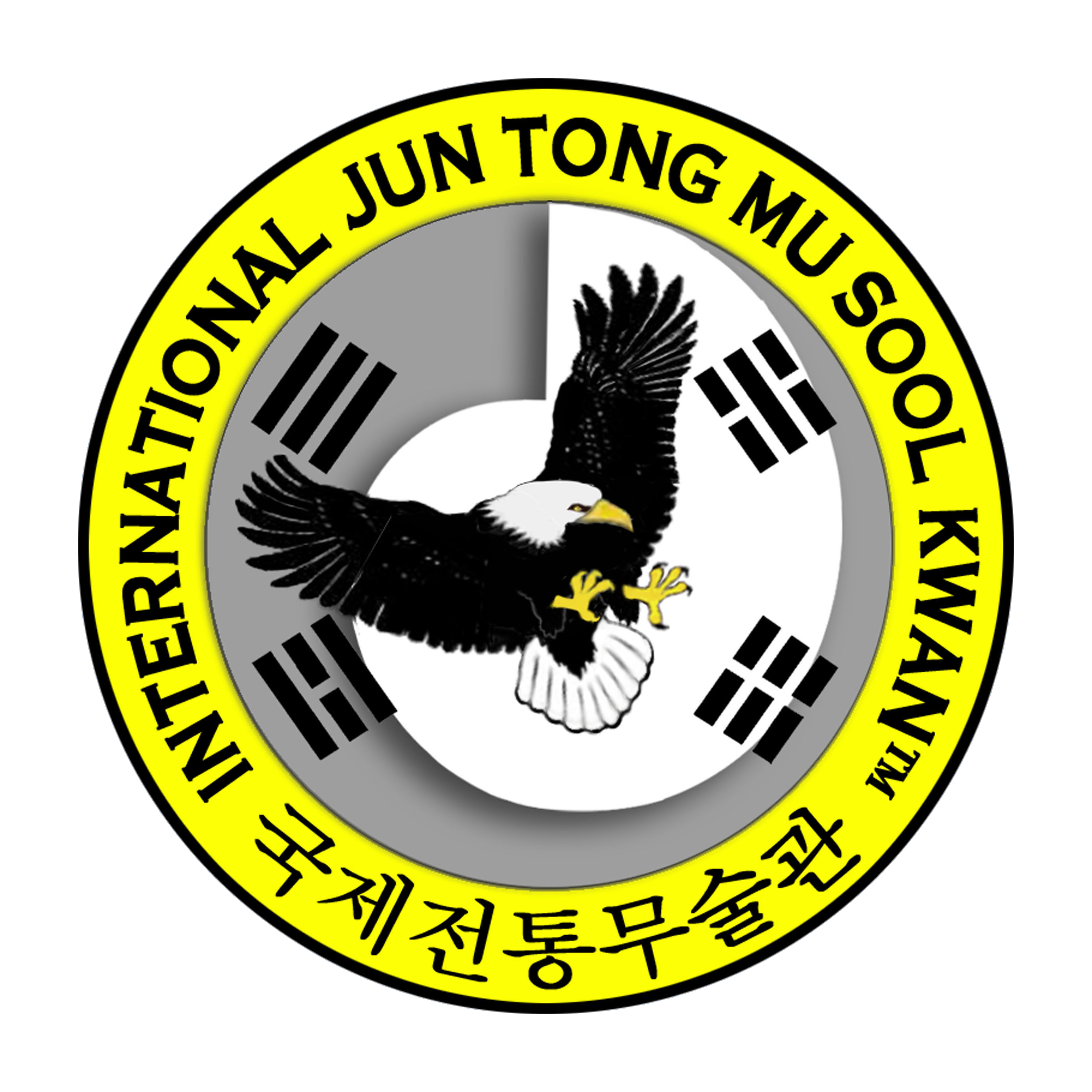List of Included JTMS Martial Arts
- Hapkido (HKD/합기도/合氣道) – “Way of Coordinated [Martial] Power”
- Tukkong Military Arts (TKMS/특공무술/特攻武術) – “Special Forces Martial Arts”
- Tae Kwon Do (TKD/태권도/跆拳道) – “Way of the Foot and Fist”
- Tang Soo Do (TSD/당수도/唐手道) – “Way of the Ancient Hand”
- Mu Ki Do (MKD/무기도/武器道) – “Way of Martial Arts Weaponry”
- Ho Shin Do (HSD/호신도/護身道) – “Way of Body Protection”
- Kuk Sool (KS/국술/國術) – “Korean {Combined} Martial Arts”
Hapkido, the flagship art of the JTMS Group, was founded through the combined efforts of many different masters beginning with the teachings of Choi Yong Sul, culminating in its present day practice that continues to refine and evolve the art. Hapkido encompasses a wide range of skills, techniques, and principles to effectively deal with all ranges and levels of combat. As such, Hapkido is a highly adaptable and complex art, able to meet the needs of literally any self-defense situation.
TKMS, or Tuk Kong Mu Sool, is the distinctive combat art of the 'Special Forces' units within the South Korean military, initially founded in 1978. TKMS is unique in that it was founded due to an official mandate by then South Korean President, Park Chung Hee, with the specific goal of training large numbers of soldiers to battlefield combat-readiness in the shortest amount of time. Tukkong Musool is a “no frills” system whose diversity includes all sorts of "hand to hand" skills, including kicking, striking, trapping, locking, throwing, pinning, grappling, stick, knife, and rifle/bayonet skills. TKMS was constructed from the martial principles, techniques, and methodologies of Kuk·Sool Hapkido and utilizes them within the principle framework of a simple, direct, yet effective combative system. TKMS demands a high level of physical fitness to meet the intense training standards common to the art, as practiced by the South Korean Special Forces. JTMS Founder and President, Grandmaster John B. Murphy, is considered by many to be the senior [non-Korean] ranking TKMS practitioner in North America, having begun his TKMS experience in the 1980’s.
Tae Kwon Do (the official martial sport of the South Korean Government) was founded in 1955 by General Choi Hong Hi. Tae Kwon Do, which is known for its exceptional arsenal of advanced kicking skills, deals almost exclusively with striking and kicking while being heavily reliant on sparring practice and forms (also known as poomse/tul/hyung). JTMS Tae Kwon Do is practiced from both a martial art and sporting perspective.
Tang Soo Do or ‘Korean Karate’ as it is also known, was founded around 1945 and is the predecessor art to Tae Kwon Do. Tang Soo Do is defined by its utilization of forms stemming from classical Okinawan, Japanese and Chinese sources, plus a strong emphasis on hip torque combined with telltale Korean kicking skills, as well as heavy philosophical implications. Unlike Tae Kwon Do, Tang Soo Do maintains a purely defensive/combative emphasis with much less involvement on sporting applications.
Mu Ki Do is the skillful use of weapons, and is thus normally practiced only by those with a solid training foundation in another “empty hand” martial art, with which to build upon. JTMS Mu Ki Do incorporates both ancient and modern weaponry, encompassing all categories, namely; impact, cutting, projectile, flexible, and combination weapon types. JTMS Mu Ki Do utilizes all martial arts weapons of the Korean Peninsula, whether uniquely indigenous or influenced by weapons from neighboring cultures (i.e. China, Japan, & Mongolia).
Ho Shin Do is a system of pure self-defense; its practice is heavily reliant on easily executed foundational elements designed for maximum effectiveness, such as straight-line kicking to low targets (no higher than the hips), joint manipulations, fundamental body throws, and centerline striking, specifically targeting vital areas like the groin, lower abdomen, and solar plexus, not to mention the eyes, nose, and throat (including the brachial plexus, suprasternal notch, and the hyoid). Unlike Hapkido and Tukkong, Ho Shin Do does NOT make use of the high falling skills, nor the more acrobatic kicking and speed throwing maneuvers of the aforementioned arts. Ho Shin Do focuses primarily on the development of instinctual body reaction with regards to blocking and evasion from common attacks, counter striking, trapping, and locking.
Kuk Sool is a combination of Hapkido and kung-fu based martial skills, which were incorporated into a comprehensive martial art that is now internationally recognized, with a considerable reputation. Kuk Sool is a traditional Korean conglomerate system which was established in the late 1950’s to early 1960’s by several masters with unparalleled knowledge of martial arts. Kuk Sool has a strong, highly organized curriculum that covers most elements of the traditional Korean martial arts spectrum, as it pertains to technique and style.




